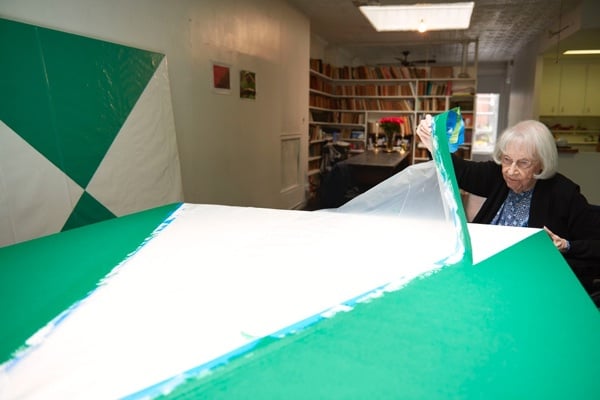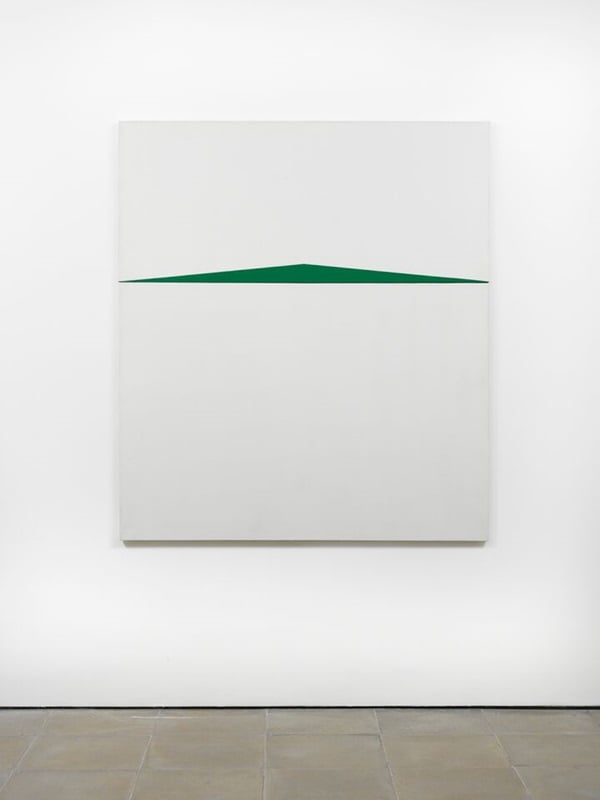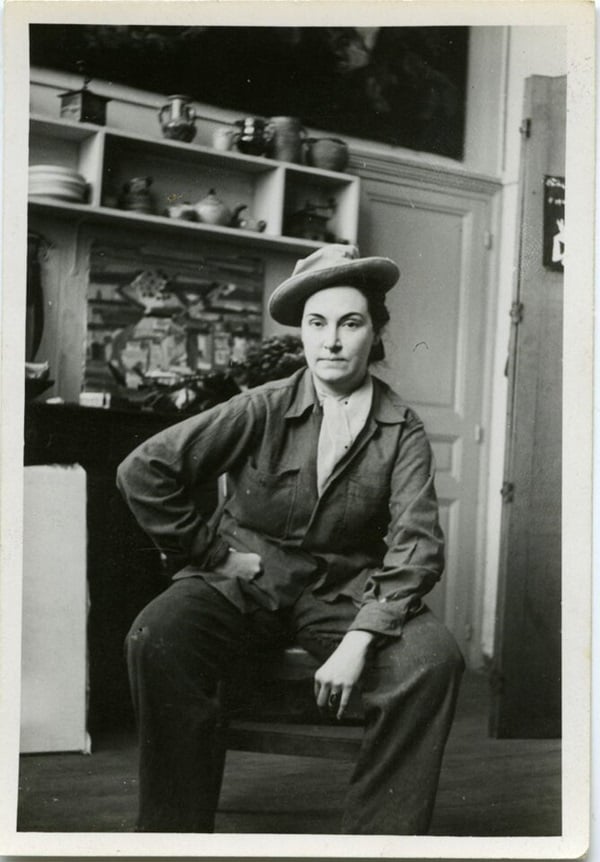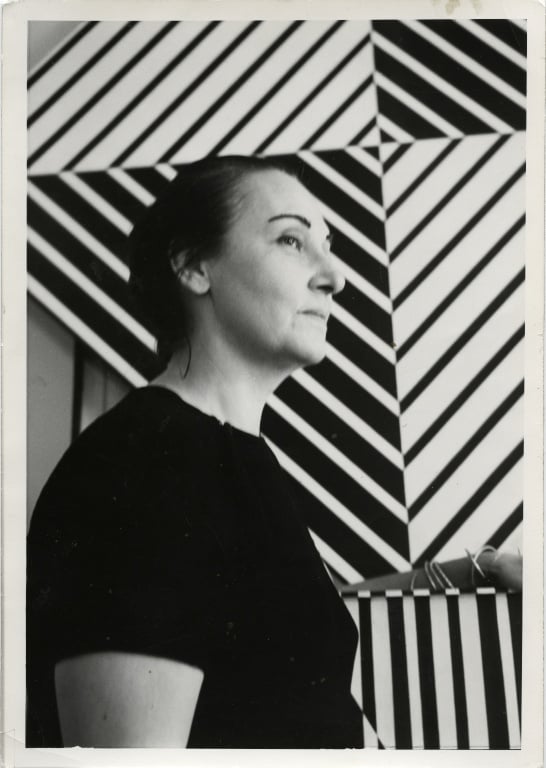Carmen Herrera, Who Sold Her First Painting Aged 89

Carmen Herrera at work on a painting.
Photo by Jason Schmidt. Image: Courtesy of Lisson Gallery, London.
Photo by Jason Schmidt. Image: Courtesy of Lisson Gallery, London.
If the life story of Carmen Herrera was written as fiction, many people wouldn't believe it.
As Deborah Sontag wrote in a front page story for the New York Times Art & Design section in 2009: "In a word, Ms. Herrera, a nonagenarian homebound painter with arthritis, is hot."
The artist had her first sale at the age of 89. In her 90s, her work became part of the permanent collections of MoMA, the Hirshhorn, and Tate Modern. After 60 years of honing and practicing her craft, creating brilliantly-colored and ever more minimal and pure geometric abstractions, Herrera is finally receiving her due in critical, institutional and collecting circles alike (see Imi Knoebel, Marianne Vitale, and Carmen Herrera Among Robust Sales at Armory Show 2014 and Sales Heat Up at Frieze New York).
The Cuban-born, Manhattan-based artist marks her first century this May 31. “Life is wonderful and funny," Herrera told W Magazine. “And then you get to be 100."
This spring, Alison Klayman directed a brief but fascinating new documentary about Herrera's life and her recent rise to fame in the art world. The film, titled, The 100 Years Picture Show—starring Carmen Herrera, premiered at this year's Hot Docs Film Festival in Toronto.

Carmen Herrera Blanco y Verde (1959) is featured in the Whitney Museum show "America Is Hard to See." © the artist. Photo: Courtesy Lisson Gallery, London.
Herrera's diptych Blanco y Verde (1959) is now on view at the Whitney Museum of American Art's debut exhibition in its new Meatpacking location, titled, "America is Hard to See." Her paintings, if you look at them carefully, can almost seem like cuts in space," curator Dana Miller says in an audio guide for the show.
The artist, who had previously studied architecture, has long been fascinated by spatial arrangements. For the upcoming London edition of Frieze this October, the Lisson Gallery in London, which represents her, is planning a solo show of her large-scale paintings at the fair.
In a 2010 interview before a previous exhibition at Lisson, Herrera told Hermoine Hoby at the Observer, "When you're known you want to do the same thing again to please people. And, as nobody wanted what I did, I was pleasing myself, and that's the answer."
The artnet Price Database lists 15 of her works at auction, the most expensive of which is one sold for $170,500, at a November 2012 auction at Christie's New York.

Carmen Herrera Untitled (2013). © The artist.
Photo: Courtesy of Lisson Gallery, London.
Photo: Courtesy of Lisson Gallery, London.
The artist, who was born in Havana in 1915, moved to the US in 1939 with her husband Jesse Loewenthal, a poet and longtime Stuyvesant High School teacher. After spending a few years in Paris following World War II—where Herrera told the Times she found her own "pictorial vocabulary," and exhibited alongside artists including Josef Albers, Jean Arp, Sonia Delauney, and others, the couple returned to New York in 1954. For decades, Herrera has occupied the same loft, which also serves as her studio, near Union Square.
Over the years Herrera has been friends with artists ranging from Cuban star Wifredo Lam, to Yves Klein, and Barnett Newman (see New Collectors Fuel Demand and Double Estimates at Latin American Art Sales and Frida Kahlo Export Market Booming Despite Export Restrictions). She also knew Jean Genet, whom she calls "a sweet man."

A still from the documentary The 100 Years Picture Show shows Herrera in Paris (circa late 1940s) .
Photo: Alison Klayman.
Photo: Alison Klayman.
The documentary includes intimate scenes of Herrera and her assistants at work, conversations with Herrera and her close friends about her life and work, and talks with art experts including Walker Art Center director Olga Viso and curator Dana Miller.
"She gets up every morning and makes art. It's a compulsion. It's what sustains her," Miller says.
Herrera, who is wry and charming, quotes an old saying: "If you wait for the bus, it will come. I waited 98 years for the bus to come."
She adds with a laugh: "Nobody cared what I did…It was a hard thing to get people to accept it. Now they've accepted it. That's okay with me."

Carmen Herrera.
Photo: Courtesy Alison Klayman.
Photo: Courtesy Alison Klayman.
Tweet Follow @eandmart







